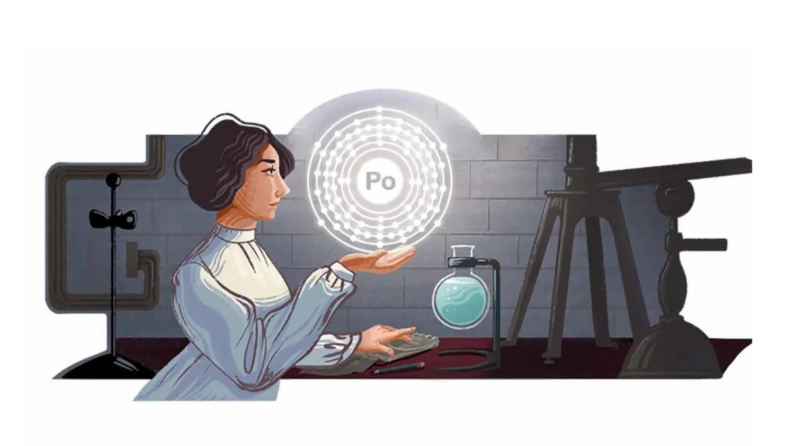Stefania Mărăcineanu was a prolific Romanian physicist working alongside Marie Curie to research a newly discovered element Polonium. Google pays its homage to the genius with a doodle on her 140th birth anniversary.

On Saturday, Google paid tribute to Ștefania Mărăcineanu on her 140th birth anniversary. She played a very critical role in the research and discovery of radioactivity and is well known for her research work on Polonium.
In the year 1910, Mărăcineanu earned a Chemical and a Physical Science degree and initiated her prolific career by being a teacher at Central School for Girls in Bucharest. During this very time period, she earned herself a scholarship from the Romanian Ministry of Science and later went on to pursue research as a graduate at the Radium Institute in Paris.
The Radium Institute notably became a central hub for study and research work on Radioactivity during that time period under the expert direction of the famous physicist Marie Curie. Polonium was discovered by Marie Curie herself and Mărăcineanu decided to pursue her Ph.D. thesis on Polonium and began her work. During the time period of her research work concerning the half-life of the radioactive element Polonium, Mărăcineanu noted that the half-life of the element was disparately influenced by the kind of metal it was placed on. This made her deduce that the alpha rays exuded from the Polonium have caused the transfer of some atoms of metal into radioactive isotopes. Her research work made it possible to pave the way for the first example of artificial radioactivity. In order to completely finish her Ph.D. work in Physics, Mărăcineanu inducted herself into Sorbonne University in Paris. After four years of arduous work at the Astronomical Observatory in Meudon, she came back to Romania and established the first laboratory in her homeland dedicated to the study of radioactivity. Mărăcineanu invested most of her time researching artificial rain, which made her travel to Algeria to substantiate the received results. She also extensively studied the relation between rainfall and earthquakes, thus becoming the first person to document the significant increase of radioactivity in the epicenter which leads up to an earthquake.
Mărăcineanu’s lifelong work was given recognition in 1936 by the Academy of Sciences of Romania electing her to serve as the institute’s Director of research. It is a matter of great tragedy that she never received her due recognition for her discovery on a global platform.













